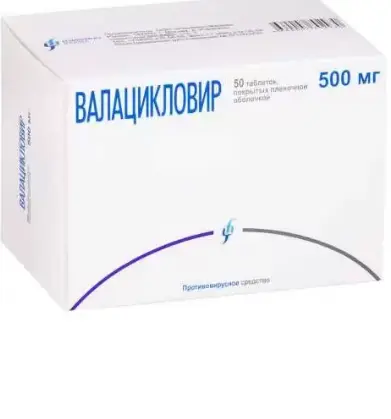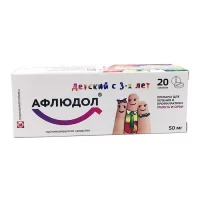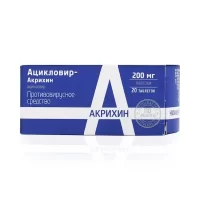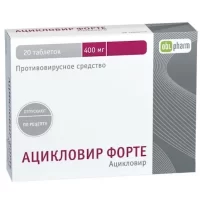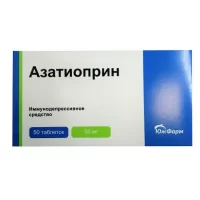Description
Valacyclovir Pharmacodynamics
Valacyclovir is an antiviral agent; it is an L-valine ester of acyclovir. Acyclovir is an analog of the purine nucleoside (guanine). In humans, valacyclovir is rapidly and almost completely converted into acyclovir and L-valine, presumably under the influence of the enzyme valacyclovirhydrolase.
Acyclovir in vitro has specific inhibitory activity against herpes simplex virus (HPV) types 1, 2 (Herpes simplex type 1, 2), varicella zoster virus (VZV), cytomegalovirus (CMV), Epstein-Barr virus (EBV) and human herpes virus type 6. Acyclovir inhibits the synthesis of viral DNA immediately after phosphorylation and conversion to the active form acyclovirtriphosphate.
The first stage of phosphorylation occurs with the participation of virus-specific enzymes. The first stage of phosphorylation occurs with the participation of virus-specific enzymes, which are present only in virus-infected cells. Partial phosphorylation selectivity is retained in cytomegalshirus and is mediated through the product of the UL97 phosphotransferase gene. Activation of acyclovir by a specific viral enzyme largely explains its selectivity.
The process of acyclovir phosphorylation (conversion from mono- to triphosphate) is completed by cellular kinases. Acyclovir triphosphate competitively inhibits viral DNA polymerase and, being a nucleoside analog, is incorporated into viral DNA, which leads to obligate chain breaking, termination of DNA synthesis and, consequently, virus replication blockage.
In immune-compromised patients, valacyclovir is extremely rare, but can sometimes be found in patients with severe immune disorders, such as those with bone marrow transplants, those receiving chemotherapy for malignancies, and those who are HIV-infected.
Resistance to acyclovir is due to thymidine kinase deficiency of the virus, which leads to excessive spread of the virus in the host. Sometimes decreased sensitivity to acyclovir is caused by the appearance of virus strains with a disrupted structure of viral thymidine kinase or DNA polymerase. Virulence of these varieties of the virus resembles that of its wild strain.
Indications
Adults and adolescents 12 to 18 years of age.
Treatment of skin and mucous membrane infections caused by HPV, including newly diagnosed and recurrent genital herpes (Herpes genitalis) and labial herpes (Herpes labialis);
prevention (suppression) of recurrent infections of the skin and mucous membranes, caused by HPV, including genital herpes, including in adults with immunodeficiency;
Prevention of infections caused by cytomegalovirus (CMV) and diseases after transplantation of parenchymal organs.
Adults
Treatment of herpes zoster and ophthalmic herpes zoster.
Contraindications
Hypersensitivity to valacyclovir, acyclovir and any other component of the drug;
HIV infection with CD4+ lymphocytes less than 100 per 1 µl;
Childhood under 12 years of age;
Childhood under 18 years of age when treating herpes zoster and ophthalmic herpes zoster.
Caution
Renal insufficiency, elderly, patients at risk of dehydration, concomitant use of nephrotoxic drugs, pregnancy, lactation, clinically manifested forms of HIV infection in patients.
Administration during pregnancy and lactation
Pregnancy
There are limited data on the use of valacyclovir and little data on the use of acyclovir (the active metabolite of valacyclovir) in women in pregnancy. Recorded pregnancy outcomes in women who have taken valacyclovir or acyclovir have not shown an increase in birth defects in their children compared to the general population. Valacyclovir is used only when the potential benefit to the mother outweighs the possible risk to the fetus.
Breastfeeding period.
Acyclovir, the main metabolite of valacyclovir, is excreted with breast milk. After oral administration of valacyclovir at a dose of 500 mg, acyclovir concentrations in breast milk were 0.5-2.3 times higher (1.4 times higher on average) than corresponding concentrations in maternal blood plasma. The mean concentration of acyclovir in breast milk was 2.24 µg/mL (9.95 µmol/L). When the mother takes valacyclovir at a dose of 500 mg twice daily, the baby is exposed to the same acyclovir as when taken orally at a dose of about 0.61 mg/kg/day. The half-life of acyclovir from breast milk is the same as that of blood plasma.
Dosage and administration
- Orally, with water and regardless of meals.
- Treatment of infections of the skin and mucous membranes caused by HPV, including newly diagnosed and recurrent genital herpes (Herpes genitalis) and labial herpes (Herpes labialis)
- Immunocompetent adults and adolescents aged 12 to 18 years The recommended dose is 500 mg twice daily.
- In cases of relapses, treatment should continue for 3 or 5 days. In the case of primary herpes, which may be more severe, treatment should be started as early as possible and its duration should be increased from 5 to 10 days. For relapses of HPV, it is most correct to prescribe valacyclovir in the prodromal period or immediately after the onset of the first symptoms of the disease. Valacyclovir use can prevent lesions from developing if used at the first signs and symptoms of relapse caused by HPV.
As an alternative treatment for labial herpes, it is effective to prescribe valacyclovir at a dose of 2,000 mg twice daily for 1 day. The second dose should be taken approximately 12 hours (but not earlier than 6 hours) after the first dose. When using this dosing regimen, the duration of treatment should not exceed 1 day, since exceeding this duration of treatment does not result in additional clinical benefit. - Therapy should be initiated when the earliest symptoms of labial herpes (i.e., tingling, itching, burning) appear.
- Prevention (suppression) of recurrent infections of the skin and mucous membranes caused by HPV, including genital herpes, including in immunocompetent adults and adolescents aged 12 to 18 years In immunocompetent patients, the recommended dose is 500 mg once daily. The efficacy of therapy should be evaluated after 6-12 months of treatment.
- Adults with immunodeficiency
- In adult patients with immunodeficiency, the recommended dose is 500 mg 2 times a day.
- In 6-12 months of treatment it is necessary to evaluate the therapy efficacy.
- Prevention of infections caused by CMV and diseases after transplantation
parenchymatous organs - Adults and adolescents between 12 and 18 years of age.
- The recommended dose is 2000 mg 4 times daily, administered as soon as possible after transplantation. The dose should be reduced depending on creatinine clearance. The duration of treatment is usually 90 days, but in high-risk patients the course of treatment may be prolonged.

